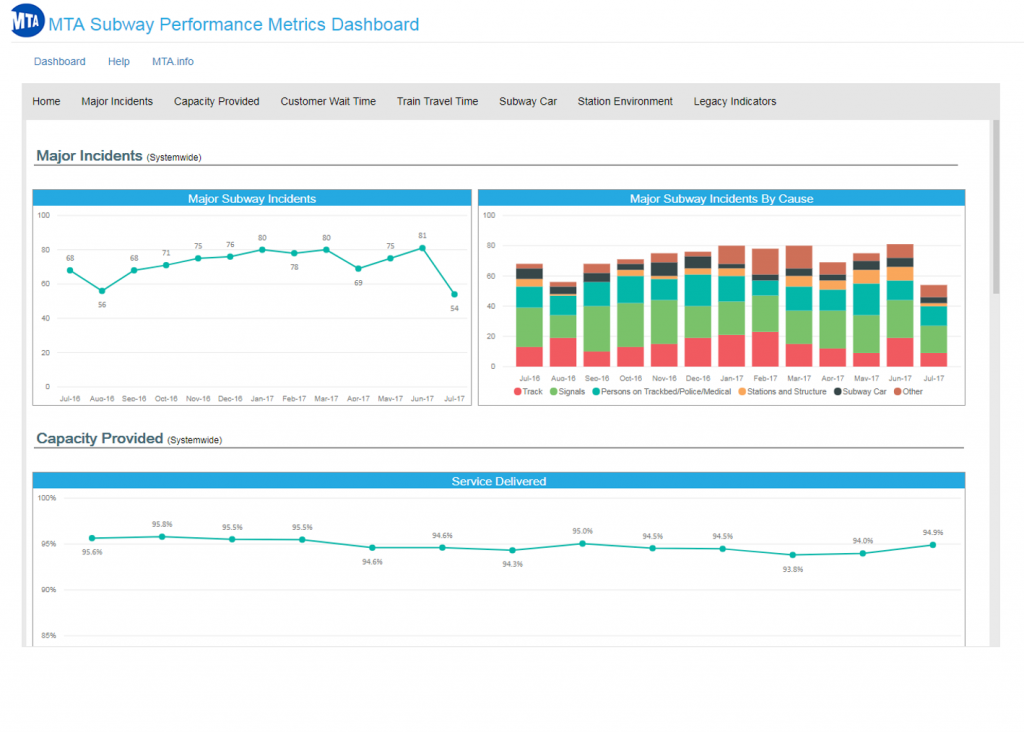Earlier this week, NYC Transit unveiled a new innovative performance metric dashboard. For the first time we are all able to clearly and easily understand the trends for travel time performance, major delays and their causes, the amount of service delivered by line as well as legacy metrics such as car performance. If the public chooses, this information can be transformational for subway riders and all stakeholders. Understanding the frequency and causes of major delays and setting goals to reduce them is critical to achieving a reliable system. They are the delays that disrupt life.
The Permanent Citizens Advisory Committee to the MTA (PCAC) has long advocated for better subway performance metrics to reflect the true rider experience. In 2011, the PCAC produced a report called Minutes Matter, examining existing performance metrics and shedding light on the need to capture passenger-based metrics. Then in 2013 the PCAC embarked on another data-driven report entitled, The MTA in the Age of Big Data, calling for the application of data analytics and trend-based visualizations to improve performance reporting to the MTA Board and to both internal and external stakeholders. These reports helped to inform NYC Transit’s decision to include passenger-based metrics such as Additional Platform Time and Train Travel Time. Metrics such as these, gives riders and stakeholders information they can understand and care about, and decision-makers the ability to make more informed decisions when it comes to service, maintenance, and capital needs.
Understanding how much service is being provided by lines means that Transit is just one step away from adding a critical overcrowding metric.
Some stations already reach dangerous levels of overcrowding when there is a subway delay. Having this public crowding metric will mean a better response to addressing overcrowding and possibly the political push that is needed to make investments that reduce crowding. That is high on our wish list now for the next dashboard iteration, as well as the crucial performance metrics for bus, Access-A-Ride and the Capital Program.
The dashboards role in planning for the MTA systems future is critical.
In late 2018, the 20 Year Needs Assessment will come out. Its purpose is to inform the investments to be made in the 2020-2024 Capital Program. If the public wants a reliable system, it must learn more about the system. Not just how to get around on it, it must understand the cause of delays and push for the necessary system investments to keep it going.
The PCAC looks forward to working with the new information tools.
The PCAC thanks the skilled staff at NYC Transit for this innovative initiative. The dashboard’s success is dependent on its users, which is why the PCAC is committed to working closely with NYC Transit to refine these tools as improved data and analytical capabilities allow. These performance metrics provide an enhanced view of subway performance allowing us and others to tap into insights, take corrective actions, and push for the system’s success.
